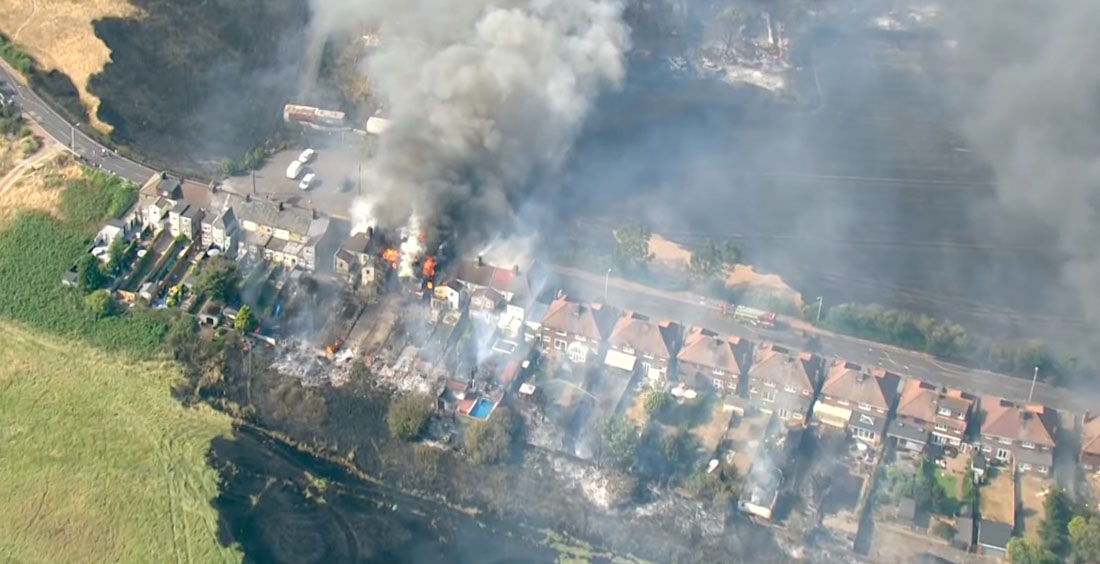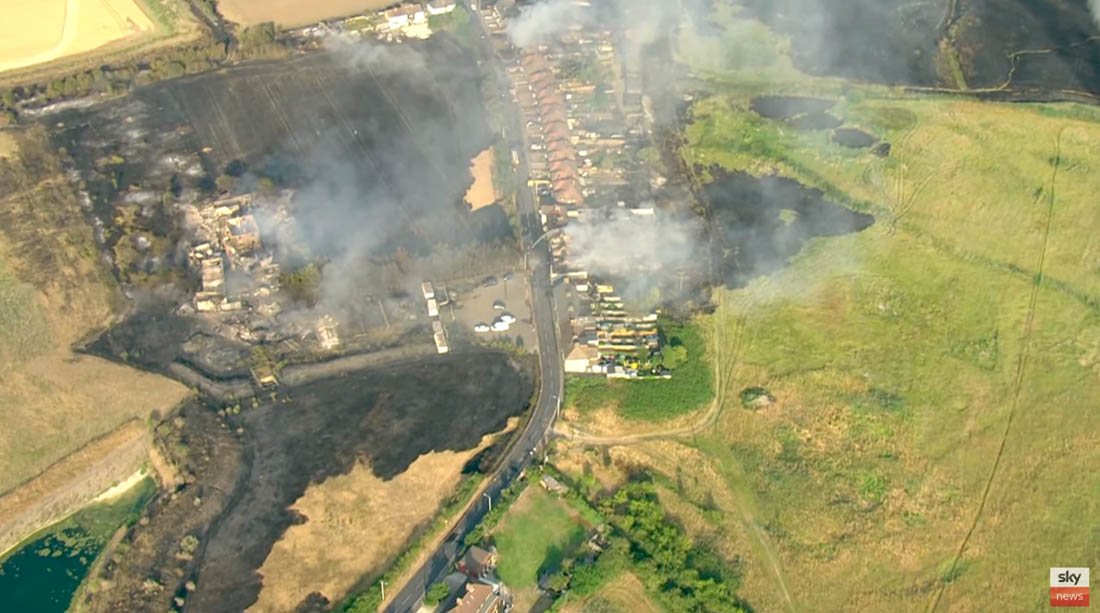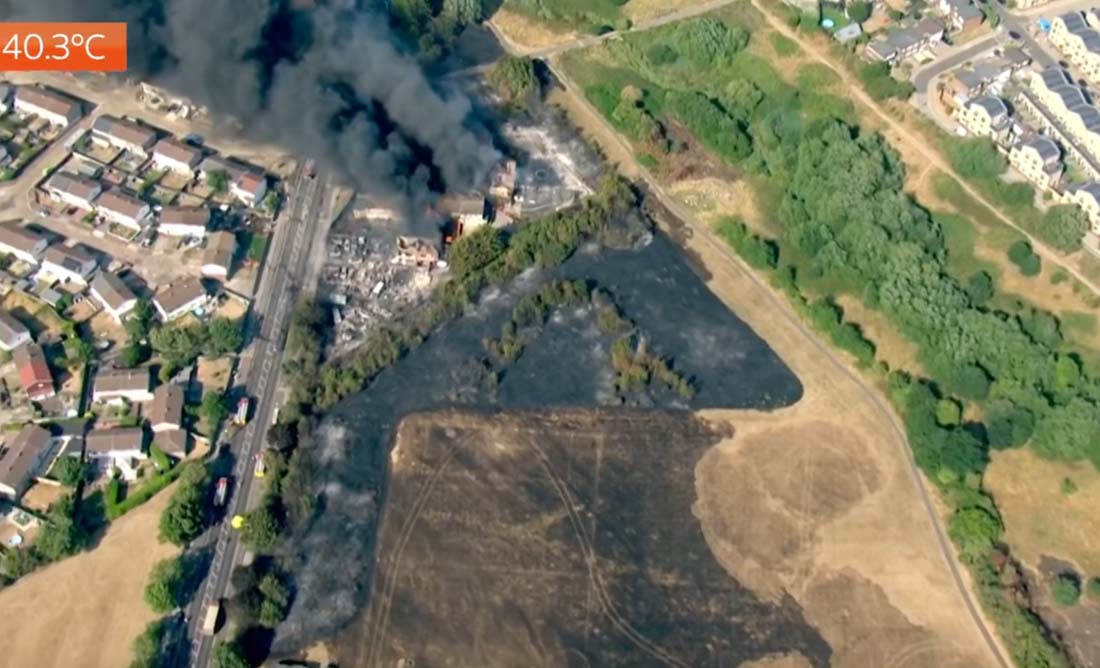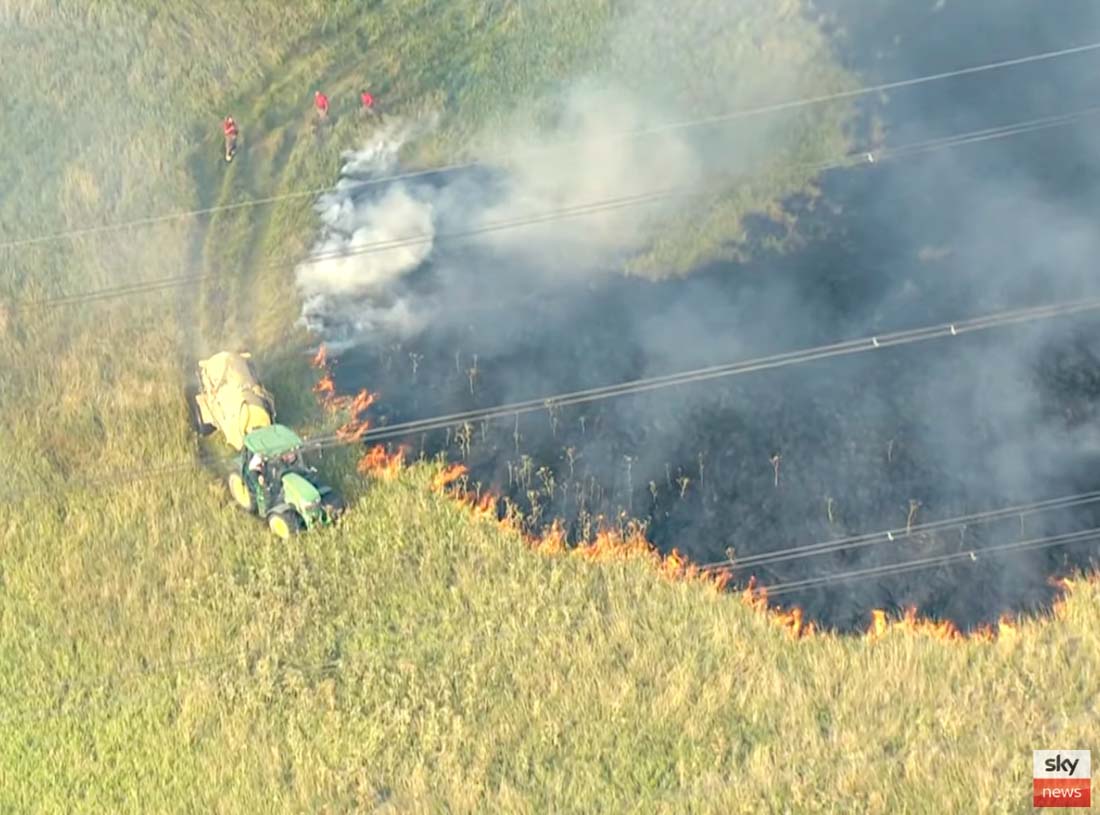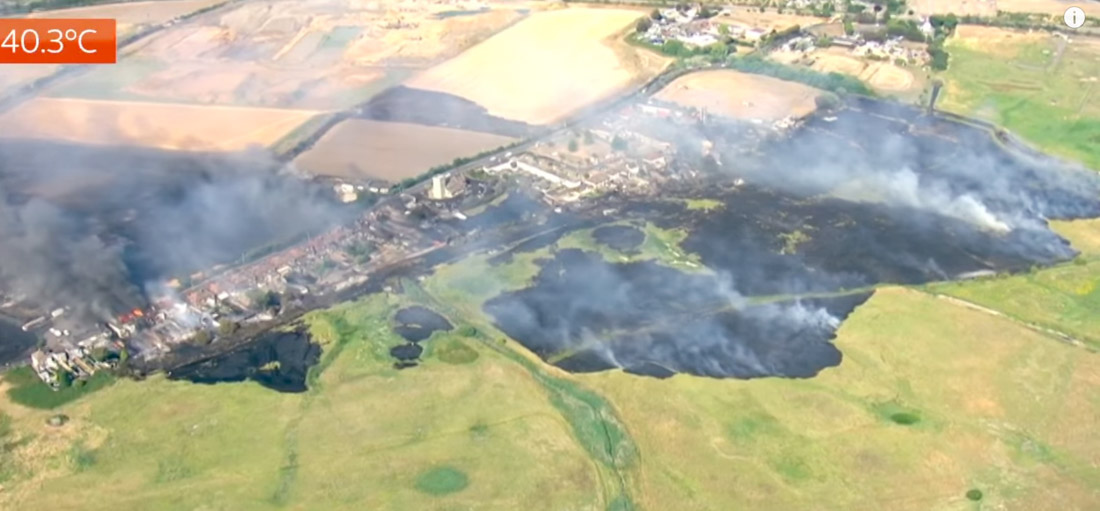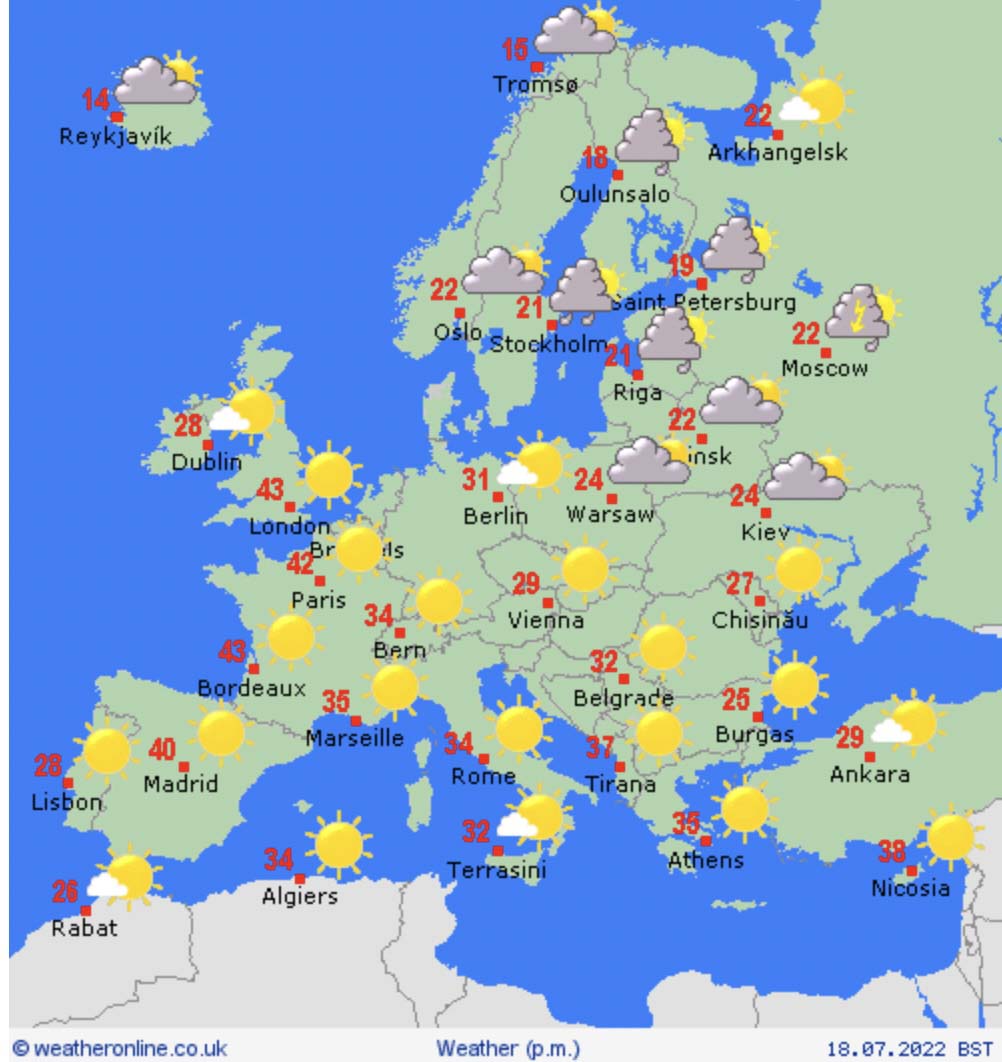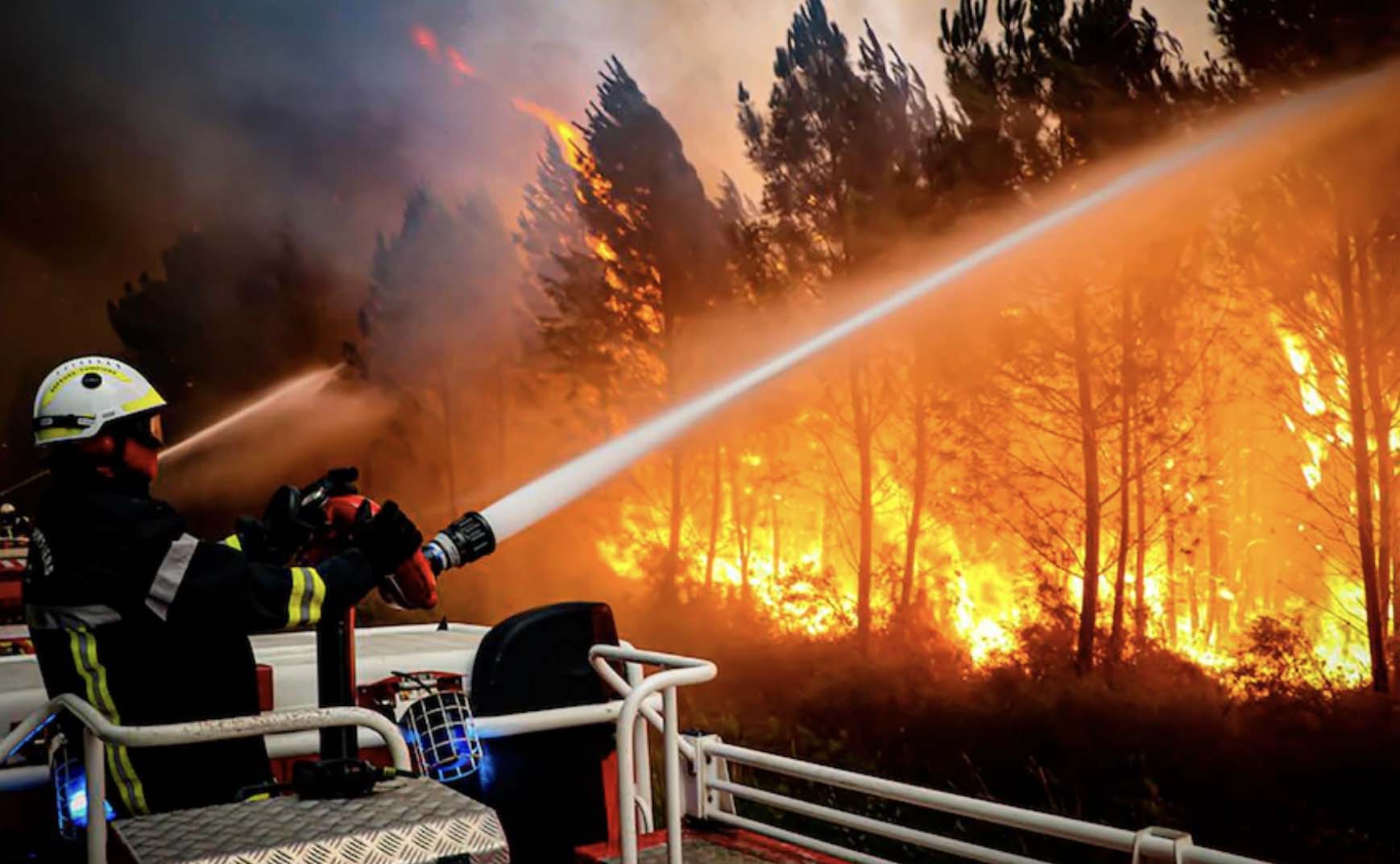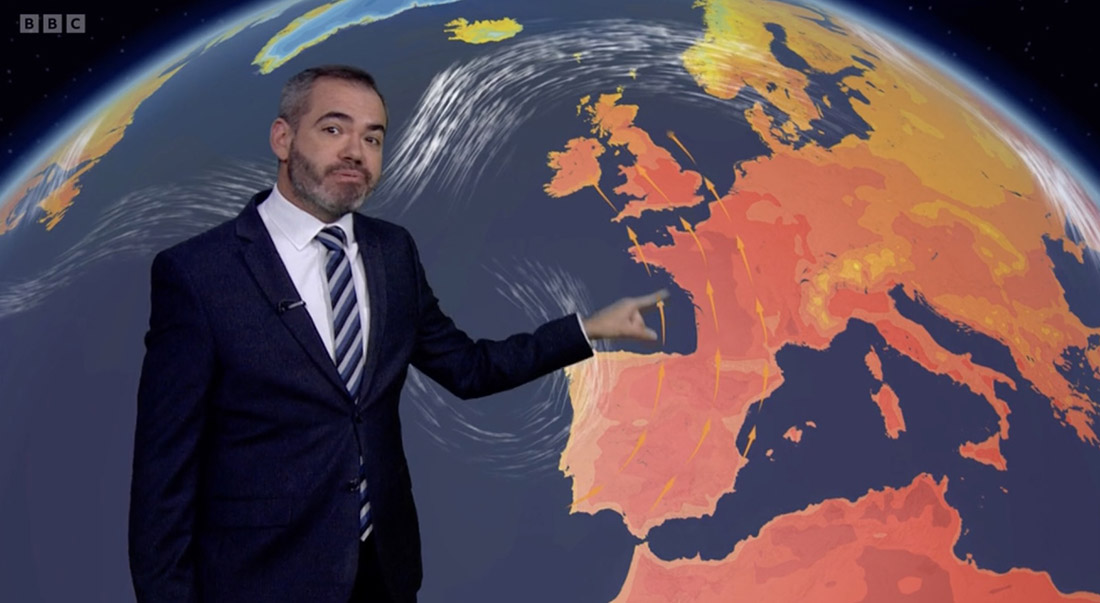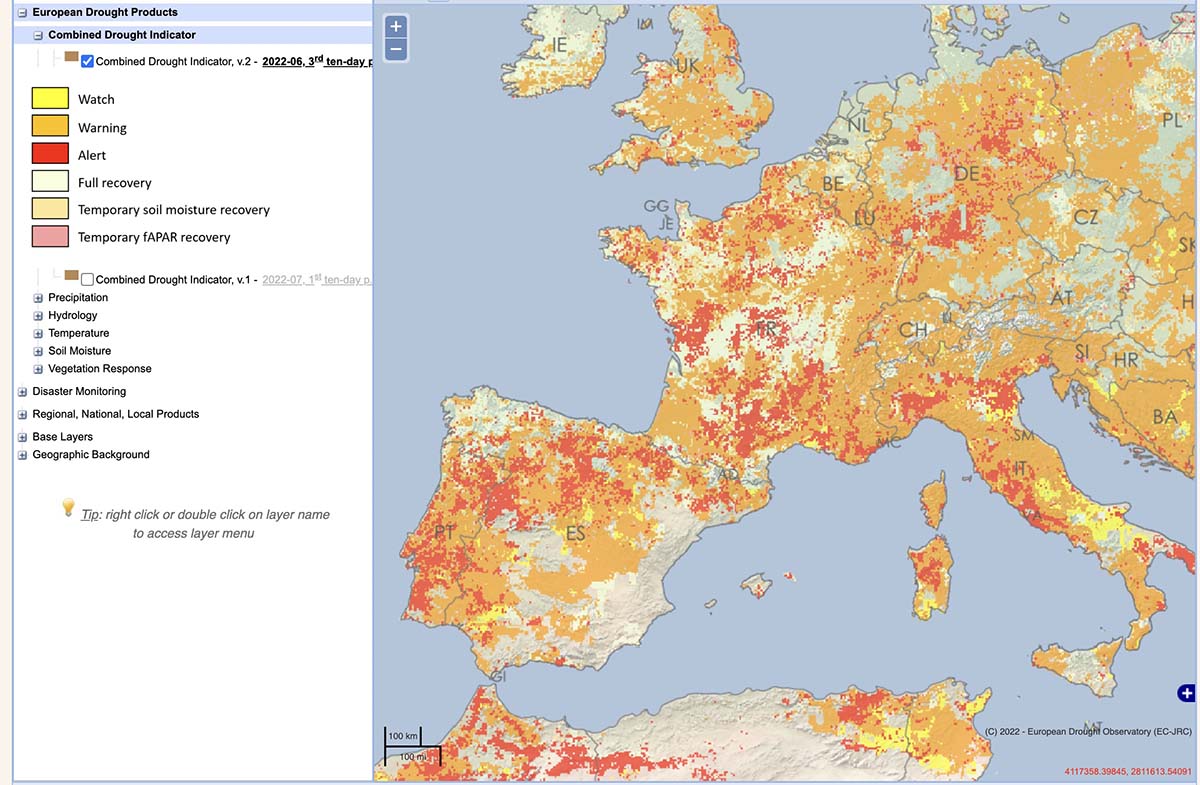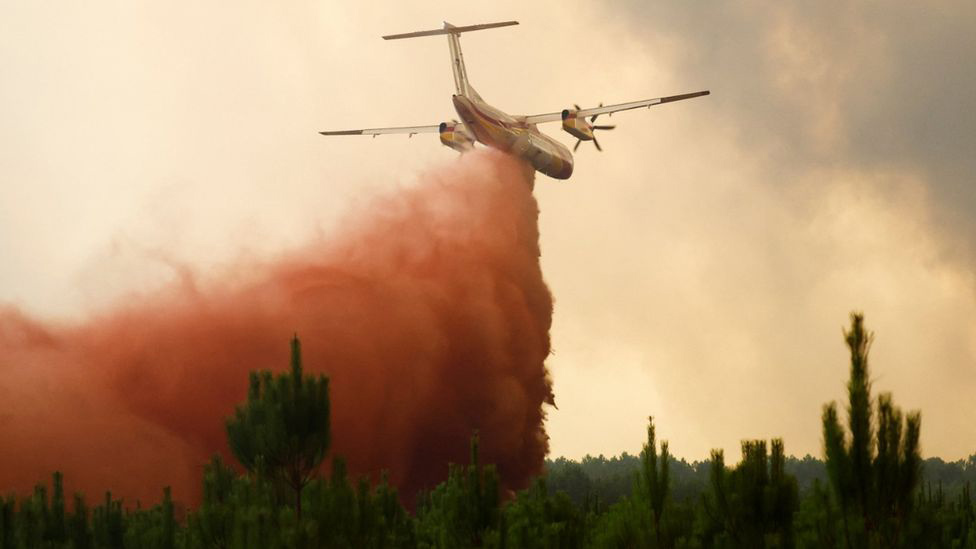
The number of acres burned this year in France through mid-August, 148,000, is six times the full-year annual average over the last 15 years. Currently there are eight large fires in the country.
In the southwest, the Gironde region south of Bordeaux has been especially hard hit. One of the fires started a month ago and burned 14,000 acres. It was thought to be controlled, but officials said it either “reignited” on Tuesday or arson may have played a role. Since then it has blackened an additional 18,000 acres, destroyed or damaged 17 homes, and prompted about 10,000 residents to evacuate.
It has forced the closure of the A63 motorway, a major route to Spain between Bordeaux and Bayonne.
The difficulty in suppressing the fires is being attributed to record-breaking drought, strong winds, and high temperatures occasionally hitting 104 Fahrenheit in the southwest.
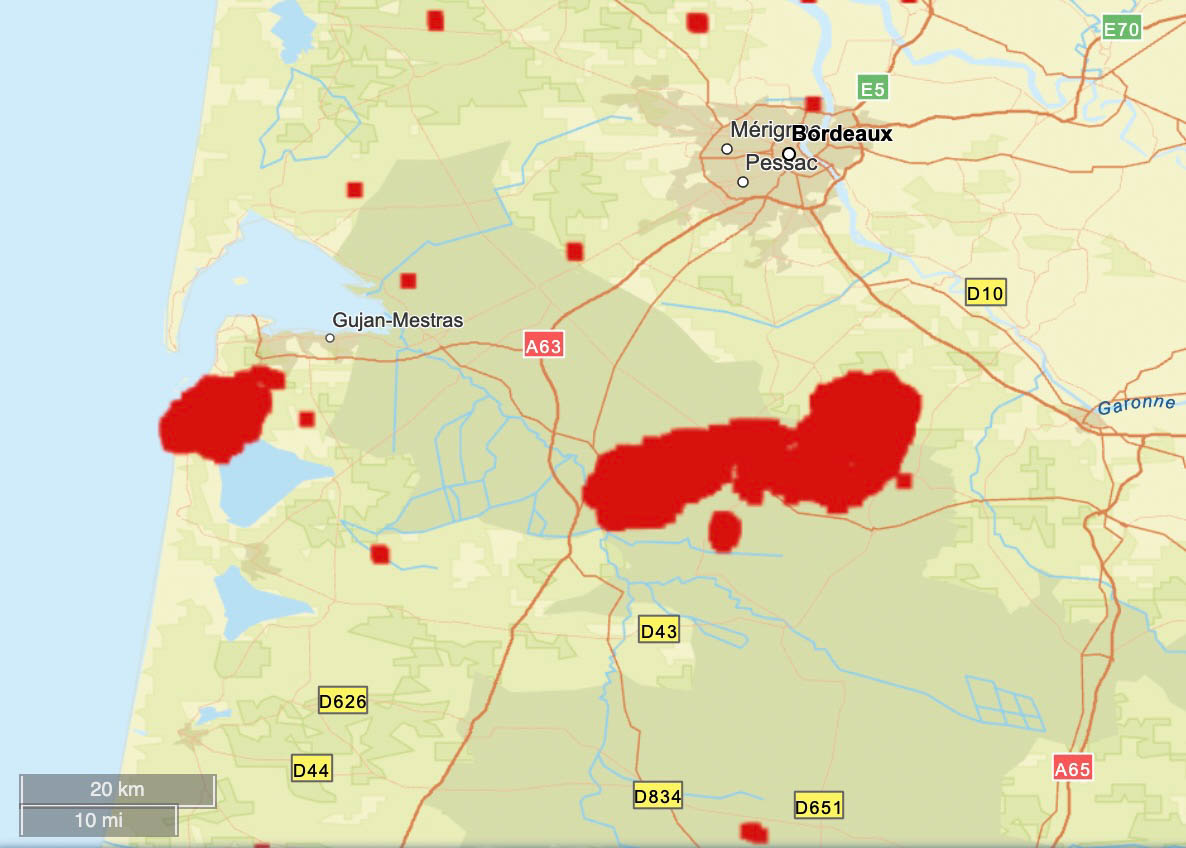
International assistance is coming in the form of 65 firefighters from Germany, others from Romania, Austria, and Poland, and water scooping air tankers from Greece and Sweden.

France has a fleet of nine S-2 air tankers and has purchased six Q400 MR air tankers, with at least four having been delivered.
‘Extreme vigilance’ as vast southwestern France fire slows https://t.co/1jMTRmE50O
— Gee Oni (@gee_oni) August 12, 2022
???️ EURO-HEAT: The #wildfire situation in #France‘s southwestern region Gironde is constantly developing.
This morning, FRANCE 24’s @LukeShrago was reporting when a fire broke out just metres from his location ⤵️ pic.twitter.com/vLfs9frCr1
— Black 〽️amba (@dreadkobe24) August 12, 2022
There is also large fire in the mountainous Serra de Estrela park in central Portugal, where 24,000 acres have burned. It is being fought by about 1,500 firefighters.




